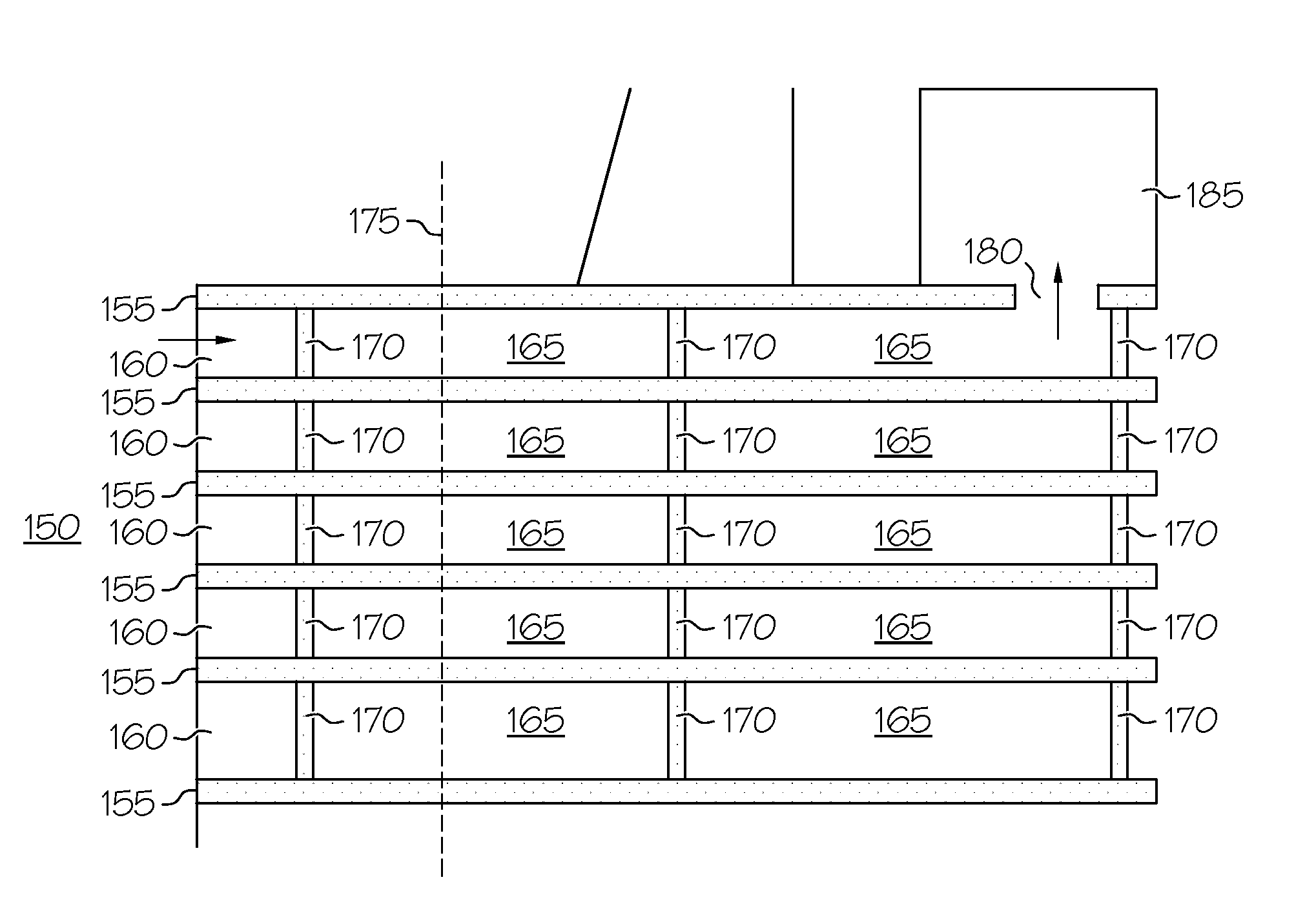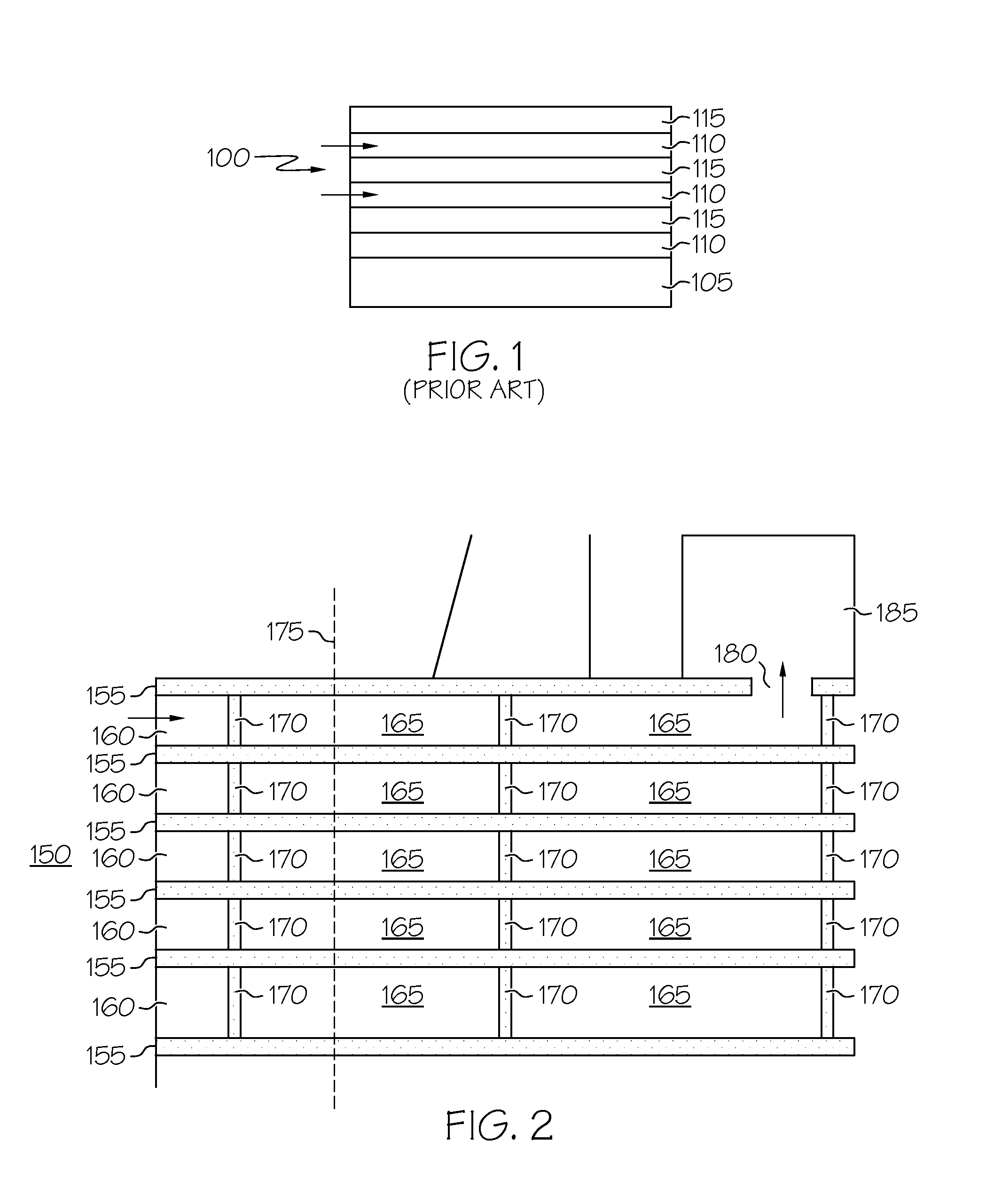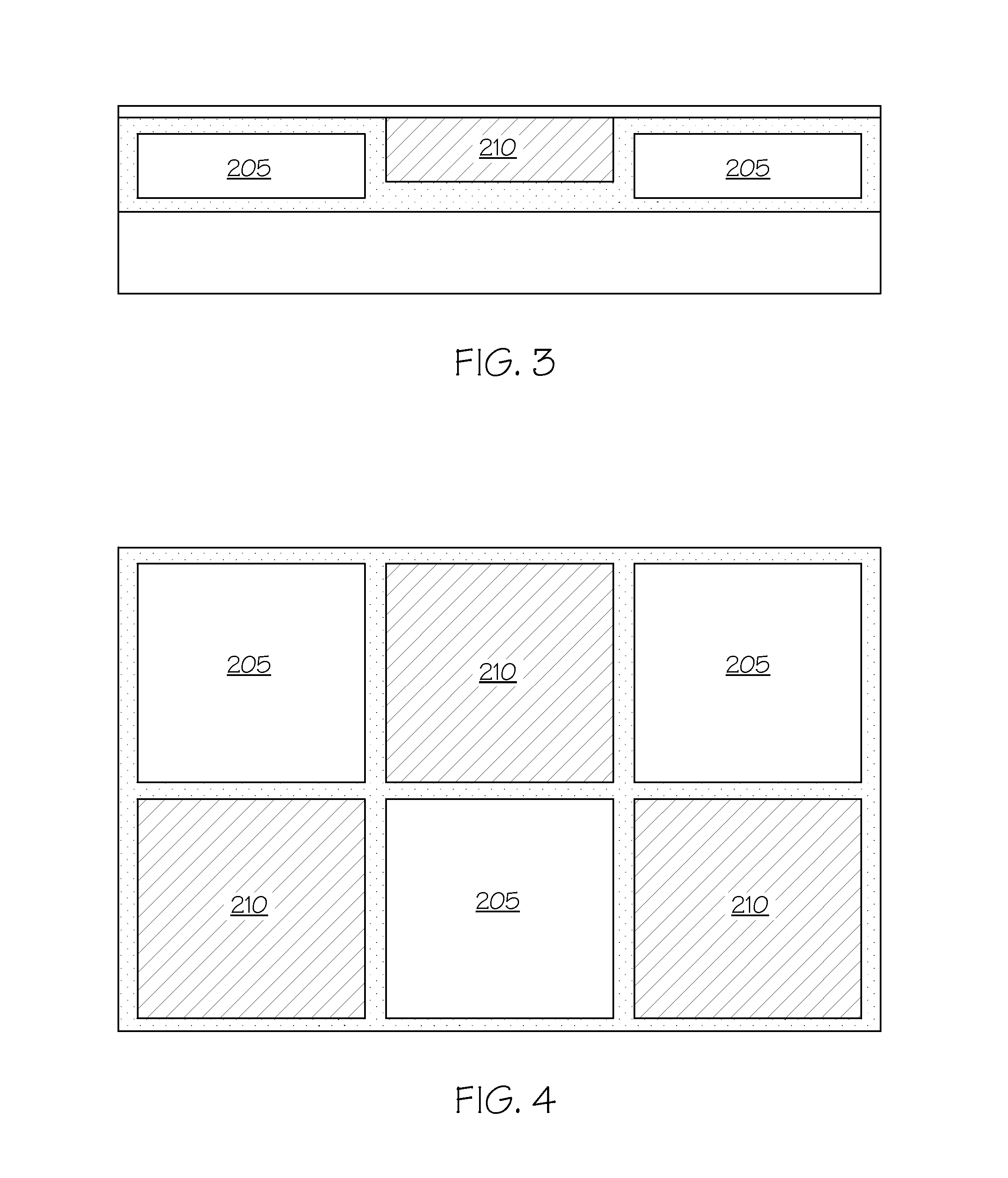Three dimensional multilayer barrier and method of making
a multi-layer barrier and three-dimensional technology, applied in the direction of cell component details, instruments, transportation and packaging, etc., can solve the problems of compromising the encapsulation, lateral diffusion into the exposed permeable decoupling layer of the multi-layer barrier, and finite lateral diffusion rate of moisture and oxygen
- Summary
- Abstract
- Description
- Claims
- Application Information
AI Technical Summary
Benefits of technology
Problems solved by technology
Method used
Image
Examples
Embodiment Construction
[0024]FIG. 2 illustrates the concept of the three dimensional multilayer barrier 150. There are alternating barrier layers 155 and decoupling layers 160. The decoupling layers 160 have sections 165 separated by walls 170. The walls 170 are made of barrier material. Dotted line 175 indicates where a cut could be made that would still result in a wall between the cut edge and the defect 180 in the barrier layer which would prevent the permeants from diffusing to the environmentally sensitive device 185, causing device failure. The walls can be repeated as often as needed across the decoupling layer so that the three dimensional multilayer barrier can be cut while still providing a wall between the permeants and the device.
[0025] The three dimensional multilayer barrier shown FIG. 2 is highly simplistic. It depicts simple rectangular cross-sections and perfect staking of cellular decoupling layers. The cells can be polygonal, circular, or other shapes, if desired. The walls do not hav...
PUM
| Property | Measurement | Unit |
|---|---|---|
| Speed | aaaaa | aaaaa |
| Water vapor transmission rate | aaaaa | aaaaa |
| Relative humidity | aaaaa | aaaaa |
Abstract
Description
Claims
Application Information
 Login to View More
Login to View More - R&D
- Intellectual Property
- Life Sciences
- Materials
- Tech Scout
- Unparalleled Data Quality
- Higher Quality Content
- 60% Fewer Hallucinations
Browse by: Latest US Patents, China's latest patents, Technical Efficacy Thesaurus, Application Domain, Technology Topic, Popular Technical Reports.
© 2025 PatSnap. All rights reserved.Legal|Privacy policy|Modern Slavery Act Transparency Statement|Sitemap|About US| Contact US: help@patsnap.com



